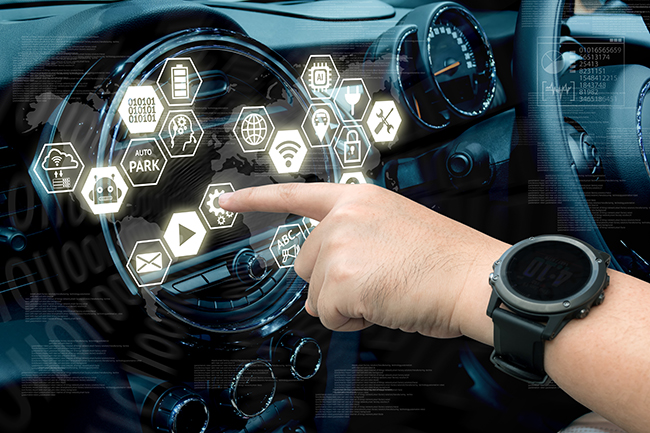 “Over-the-air-updates” will become an expectation among future car buyers raised in the latter part of the digital age and beyond.
“Over-the-air-updates” will become an expectation among future car buyers raised in the latter part of the digital age and beyond.
Much has already been written about the potentially negative impact of online sales on the future of the traditional auto dealer. But an even greater threat may come from another digital direction — “over-the-air” updates, often just called OTA.
These updates are simply software additions or revisions that are distributed from the OEM to a vehicle’s on-board computer network via Wi-Fi or a mobile broadband connection, making use of functions built into the vehicle’s operating system.
It’s a technology that has long been used for updating personal computer and smartphone software, patching problems as they are realized and making improvements as they are developed. Automakers have used the technology for years, for auxiliary functions such as adding satellite radio channels or updating navigation maps.
Tesla upped the ante on OTA for automobiles in 2012, pushing updates for safety-critical functions such as steering and braking to its Model S sedans. Since then, Tesla owners have been able to download software fixes for a faulty keyless entry system and to add new features such as rain-sensing wipers and various levels of ADAS. The EV-maker even used OTA to resolve a braking issue that would normally have entailed a physical recall.
Since then, several other automakers have followed suit, to varying degrees, and the practice is expanding rapidly. It is being used for everything from smoothing out the shift characteristics of an automatic transmission to recalibrating engine emission controls.
Ford has gone so far as to suggest that the upgrades possible with OTA in its new electric Mustang Mach-E could enable an extended life-span between major redesigns — another practice exploited by Tesla.
And BMW has resorted to OTA for activation of such amenities as heated seats and certain infotainment features — on a paid subscription basis!
But it is the potential to reduce or eliminate the need for customers to return for servicing that should be most concerning to dealers. While many OEMs still rely on dealers to download safety- or emissions-critical OTA updates to customers’ cars, that practice is unlikely to continue indefinitely.
In most cases, there is no outstanding technical impediment to OTA downloads of all types being made directly from an OEM to customers’ vehicles — without any dealer involvement at all.
While many OEMs still rely on dealers to download safety- or emissions-critical OTA updates to customers’ cars, that practice is unlikely to continue indefinitely.
Unlike the impact of online sales, which may influence one-time front-end income, such direct OTA downloads could radically affect the ongoing fixed-ops business that is the lifeblood of a typical dealership.
The increasing digitization of vehicle systems and functions correspondingly increases their potential for OTA servicing. At the same time, the growing trend toward electrification of powertrains is diminishing the need for some traditional maintenance services, such as oil and filter changes.
The combined effect of those converging trends promises not only to reduce, but possibly sever the ongoing relationship between customer and dealer after the sale is made. As well as the direct business loss entailed, along with it goes the regular opportunity to inspect customers’ vehicles and recommend repairs and other routine maintenance that may be required. That stack-up of diminished opportunity could result in a dramatic impact on the dealer’s bottom line.
OEMs have typically downplayed the negative effects of OTA on dealers, with suggestions such as, “they will free up dealer resources for more profitable work.” One has suggested that OTA updates will prompt customers to contact their dealers for explanations of the changes made — without suggesting any corresponding compensation.
A more promising possibility comes from the potential for collecting and analyzing vehicle-usage data, both to predict the need for routine maintenance and suggest component replacements as they approach their end of life — before they malfunction or fail. Advancements in such data-crunching capabilities have significantly improved their predictive abilities in those respects.
Many on-board telematics systems already provide automated vehicle-health reports and recommended maintenance notifications. Depending on the manufacturer, such notifications may be sent to both the vehicle/owner and the related dealer, for follow-up.
Similarly, when faults or malfunctions are detected within a vehicle, OTA could enable real-time remote diagnostics and, if the issue is critical, direct the driver to the nearest dealership.
Such practices vary with and are dependent on the specific dealer-OEM relationship. At best, it appears that direct OTA is likely to become even more prevalent in the future as vehicles get ever closer to being simply computerized devices on wheels.
OTA will become not only more acceptable, but expected by future generations of buyers raised with smart phones and their associated culture. So, you can add OTA to the list of challenges dealers are now facing.











